Why cabbage has purple leaves and what to do and what is missing
Why cabbage has purple leaves, what to do in this case - few know. Cabbage is a favorite vegetable of many gardeners. She is planted everywhere. In terms of leaving, the culture is rather picky. The only thing that worries gardeners is that the plant is easily affected by diseases and attacks of pests. The appearance of purple leaves is a reason to be on your guard. There may be several reasons for this phenomenon.
How to choose a variety for seedlings
So that the plant does not hurt, and the heads of cabbage grow strong and strong, it is necessary to carefully consider the choice of seeds for seedlings. It is this factor that determines the harvest, the quality of which does not always correspond to the expected.
Before buying seed material, the summer resident must determine for what purposes it is necessary to grow cabbage:
- for use in the summer as an integral part of vitamin salads;
- for fermentation and preservation in salty form;
- for storage in the basement during the long winter months.
Cabbage varieties today a lot. They differ in terms of ripening, head density, pungency of taste and other characteristics.
Very early varieties form tight heads of cabbage already at the beginning of the summer season, mid-season varieties become edible by mid-July, and late ones have to wait almost until the frost. Harvested at the end of October, such heads of cabbage can easily be stored throughout the winter.
Landing in the ground
Proper planting determines the success of cabbage cultivation. It is necessary to plant young plants in the ground at a distance of at least 0.5 - 0.7 m from each other. Of course, you should not approach the garden with a ruler, but you must follow this rule by eye.
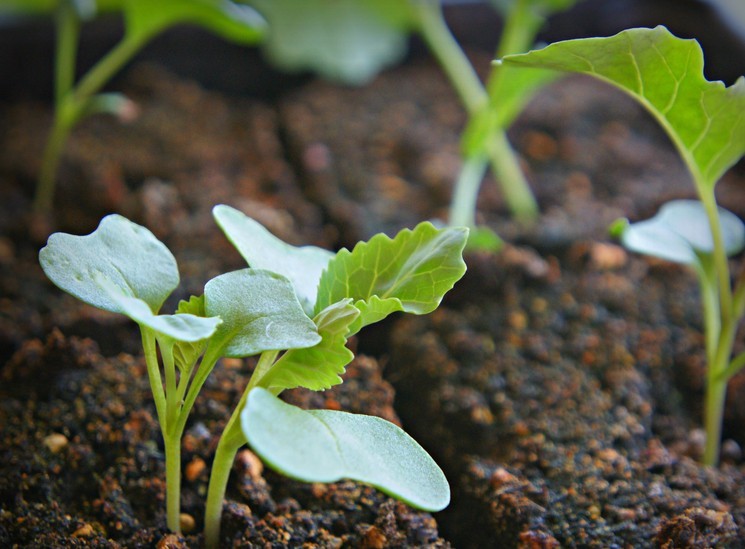
Before planting, it is necessary to make holes, into which, in addition to plants, many useful substances will go. This includes humus, fresh manure, and mineral fertilizers. Every gardener knows what exactly the soil needs in his garden, and in accordance with this he will make the choice of top dressing, which will make the receipt of nutrients more rational.
It is important that the plant should not be immersed in humus. This organic fertilizer only helps to form the bottom layer of the hole in which the seedling will be placed.
The amount of fertilizer applied is approximately 1 plastic cup. You can add a little wood ash, about the size of a matchbox. You can cover all this with one or two handfuls of earth.
At the next stage, the hole must be watered. Due to the fact that the culture is hygrophilous, each well must receive at least one liter of water. Watering the cabbage on top will not be enough.If the seedlings are planted in hot weather, you can let the holes stand so that the manure begins to generate heat, which is so necessary for young plants.
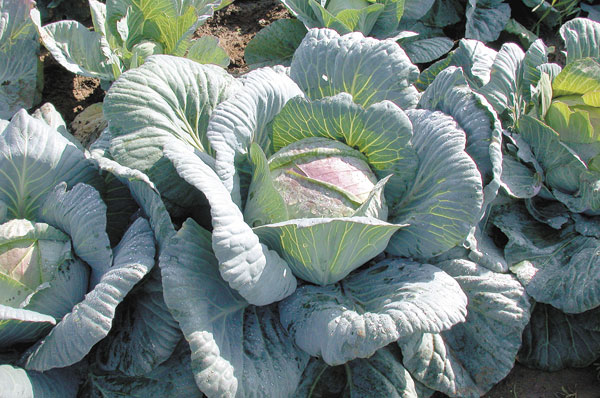
When removing seedlings from the pot, the root system should be treated with growth stimulants, of which there are many - the gardener can only choose. With the use of these drugs, the survival rate of seedlings becomes much higher.
Separate plants from each other during planting into the ground should be extremely careful. After separating the seedlings, you should lightly press on the clod of earth to remove the plant from the pot. It is very important to keep the root system intact.
In the process of planting seedlings, you should pay attention to their condition. Sick, weak and small bushes should be removed. Only the largest, strongest seedlings should be planted. Before placing them in the hole, the roots can be treated with a growth stimulator.
Putting the plant in the hole and holding it with one hand, sprinkle the trunk with the other until the cotyledonous cabbage leaves. The ground needs to be leveled, slightly pressed. This is necessary so that the roots stand firmly and voids do not form in their place.
Adhering to agricultural practices after transplanting seedlings is more likely to guarantee plant health and disease resistance.
Causes of purple leaves
The combination of the harmonious action of various components inside the seedling is manifested in the form of a color scheme. Each plant has its own range. In such a very capricious culture, the green color determines the action of 4 components:
- nitrogen;
- magnesium;
- potassium;
- phosphorus.
These elements form the basis of the vitamin balance of cabbage. This means that a change in leaf color signals a change in this equilibrium. Zoologists believe that the appearance of a purple hue is a signal of a lack of phosphorus.
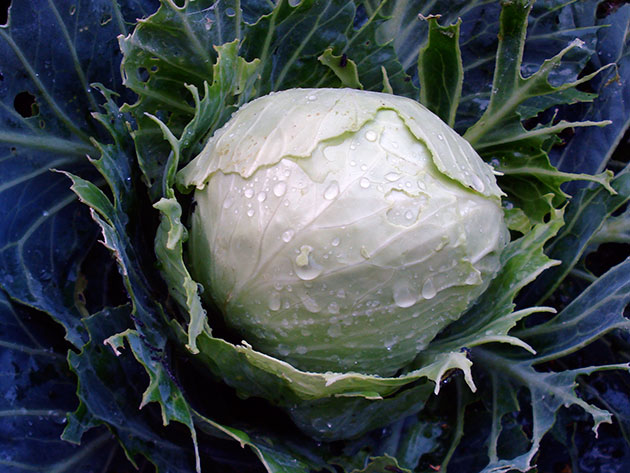
Thus, the main reasons why cabbage leaves turn blue are as follows:
- The first and most basic reason is an acute lack of phosphorus and nitrogen. In case of such suspicions, the plants must be fed with complex compounds that contain these substances.
- Violation of growing conditions can cause the appearance of a purple hue on cabbage leaves. This is a moisture-loving plant, and in case of a lack of moisture during cultivation, it begins to experience stress. Low temperatures, stresses caused by transplantation, and excessively high humidity will negatively affect the condition of the plant.
- A disease known to all as black leg. It is impossible to cure a plant from it. The black leg caused by the fungal pathogen infects the roots of plants and leads to a blockage of nutrition.
What to do
If the cabbage turns purple, you need to deal with the cause of this condition. For this you will need:
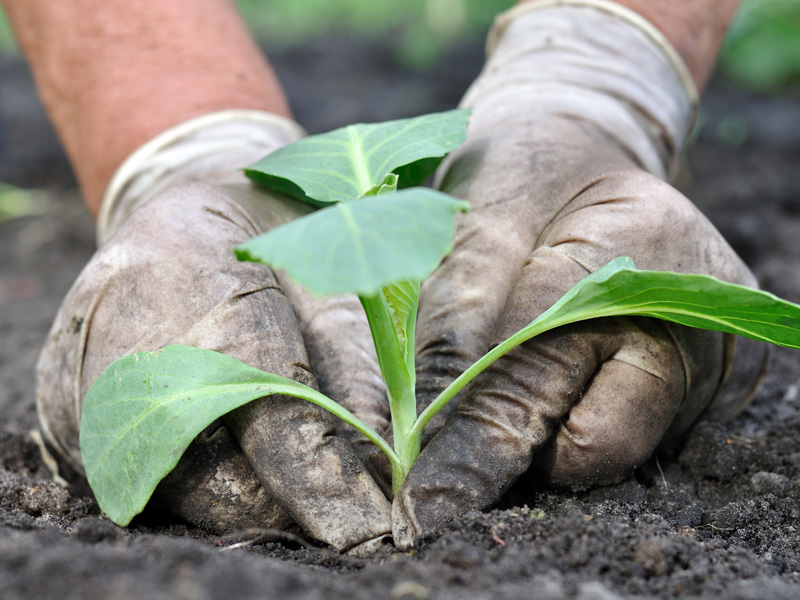
- fertilizer containing phosphorus;
- colloidal sulfur;
- covering material (agrospan).
It's easy to guess what to do if the cabbage has purple leaves. Since most often the lilac color of the leaves is associated with the fact that they lack phosphorus, the solution to the problem lies in feeding the plants. At first, the change in shade occurs only at the veins, then at the central part of the leaf, at the last stage of the disorder, the edges of the leaves turn yellow, after which they die off.
If the leaves turn purple, there is only one way out - feeding with phosphorus fertilizer. It can be either superphosphate or a product made independently on the basis of droppings, manure and other similar components.
It is interesting that the normal development of plants can occur with a small amount of phosphorus, but its lack can quickly destroy cabbage.
Violation of the cultivation conditions negatively affects the condition of future heads of cabbage.If the cabbage seedlings turn blue, methods such as adjusting the temperature in the room, balanced nutrition, and regular watering can help. It is worth normalizing all the processes that are vital for cabbage heads, and the cabbage leaves will regain their color.
The stress caused by the movement of seedlings can lead to a change in the shade of the cabbage leaf, which becomes like a lilac. This is difficult to fix, but easy to foresee. If the transfer has already taken place, and all other growing conditions meet the requirements, then within a few weeks the state of the plant will return to normal.
An adult plant turns blue due to exposure to low temperatures. To avoid such complications, you can cover cabbage beds with spandbond. The cold will not be terrible if the plants are protected.
If a black leg is the cause of the leaves turning blue, it is impossible to save the plant, as well as to avoid dead leaves, but you can try to protect other heads of cabbage. To do this, you first need to pull out the infected specimen, and treat the rest with a solution of colloidal sulfur.
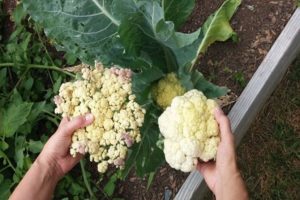
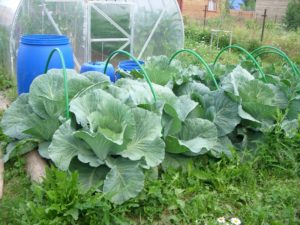

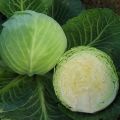

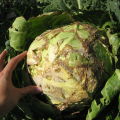
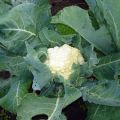

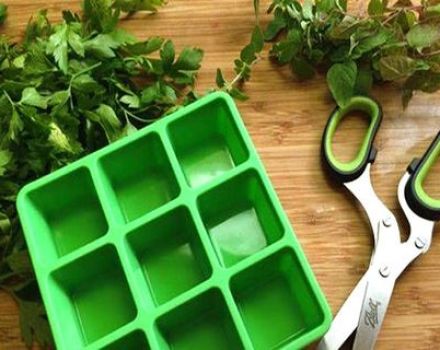

This problem often arises from the use of the wrong fertilizer. It is better not to experiment with cabbage, but to use time-tested drugs. I definitely add to the soil "BioGrow».